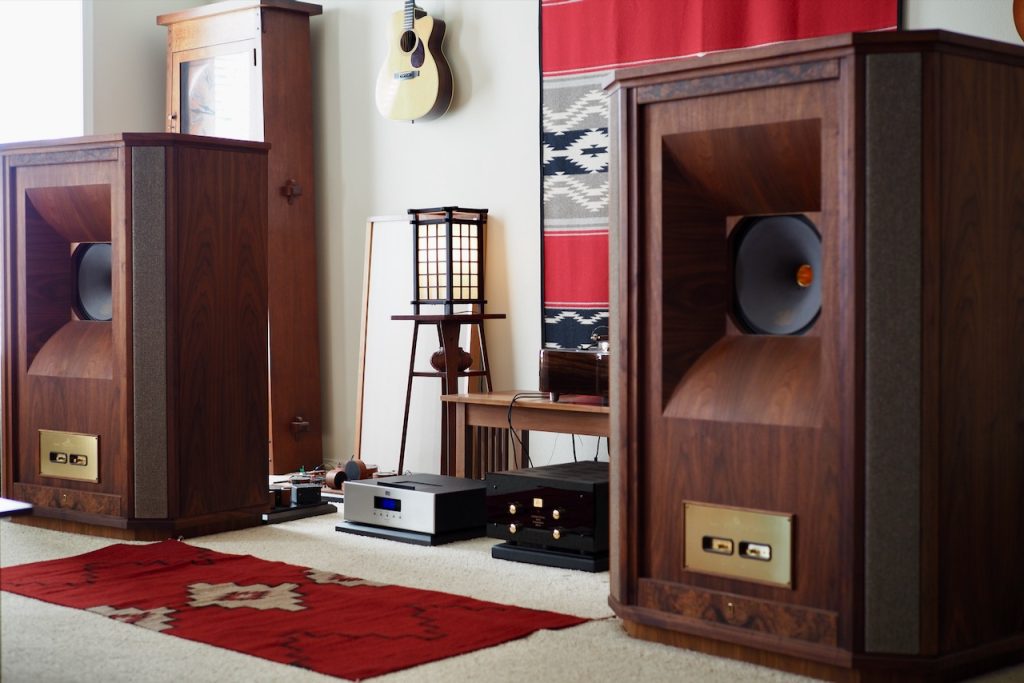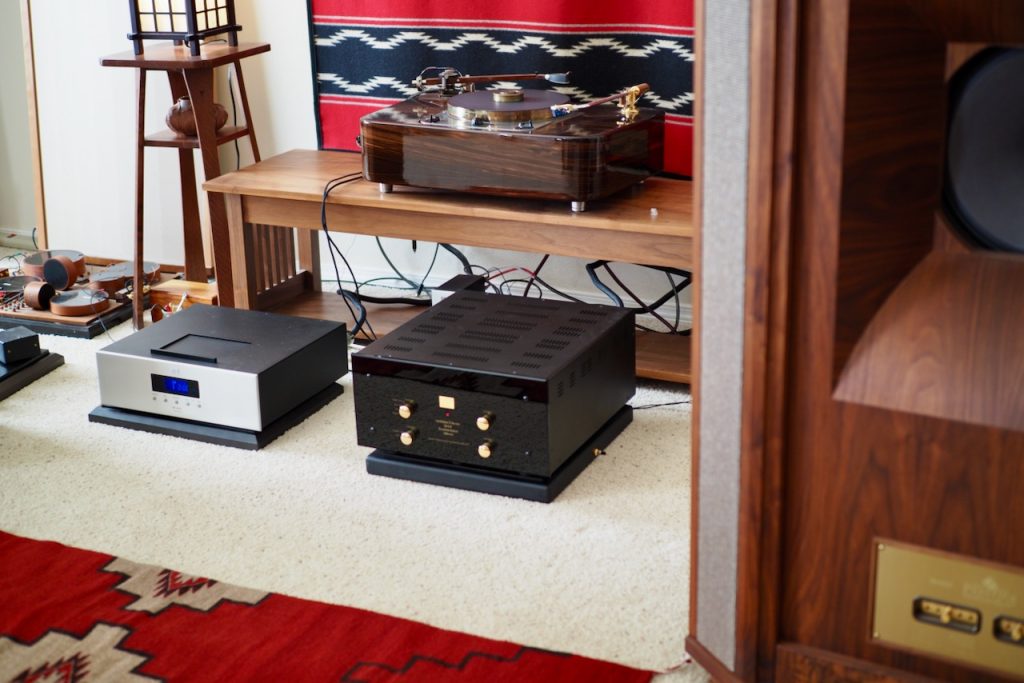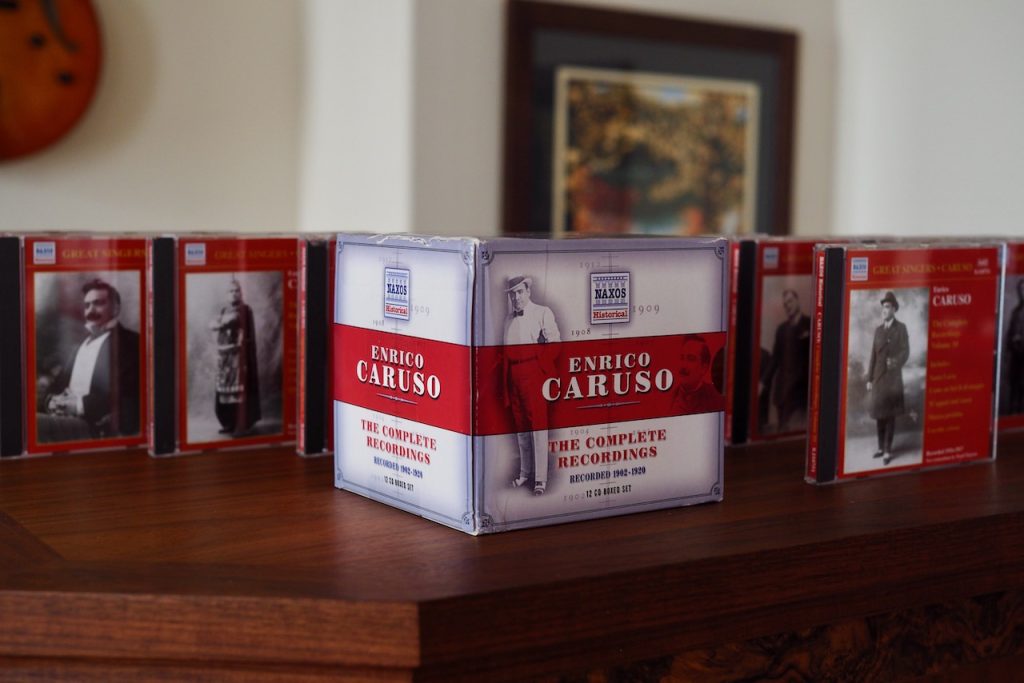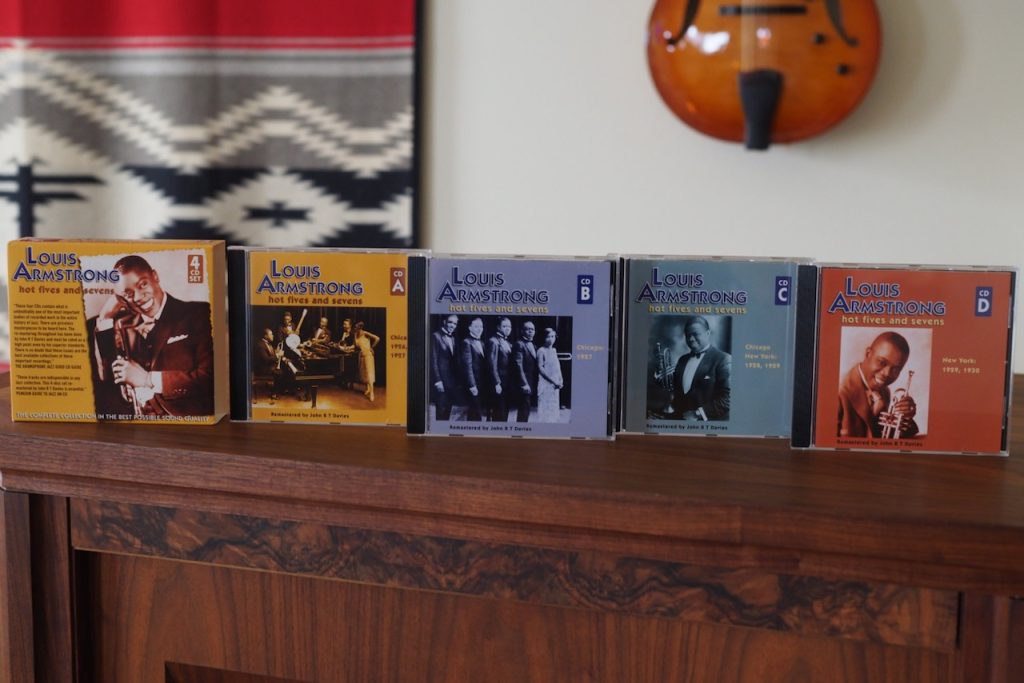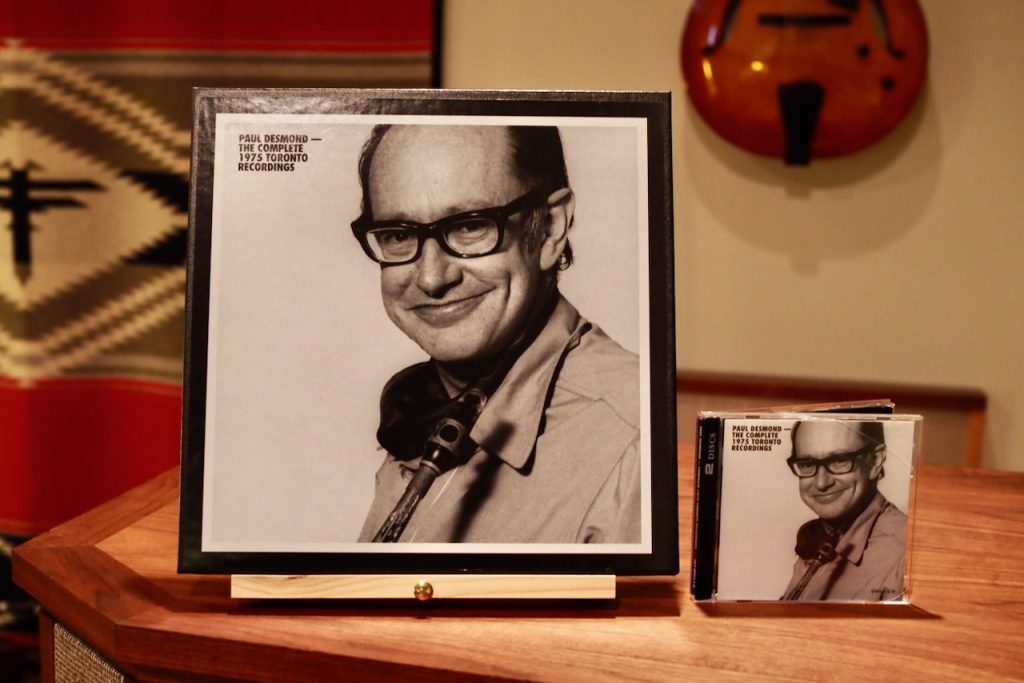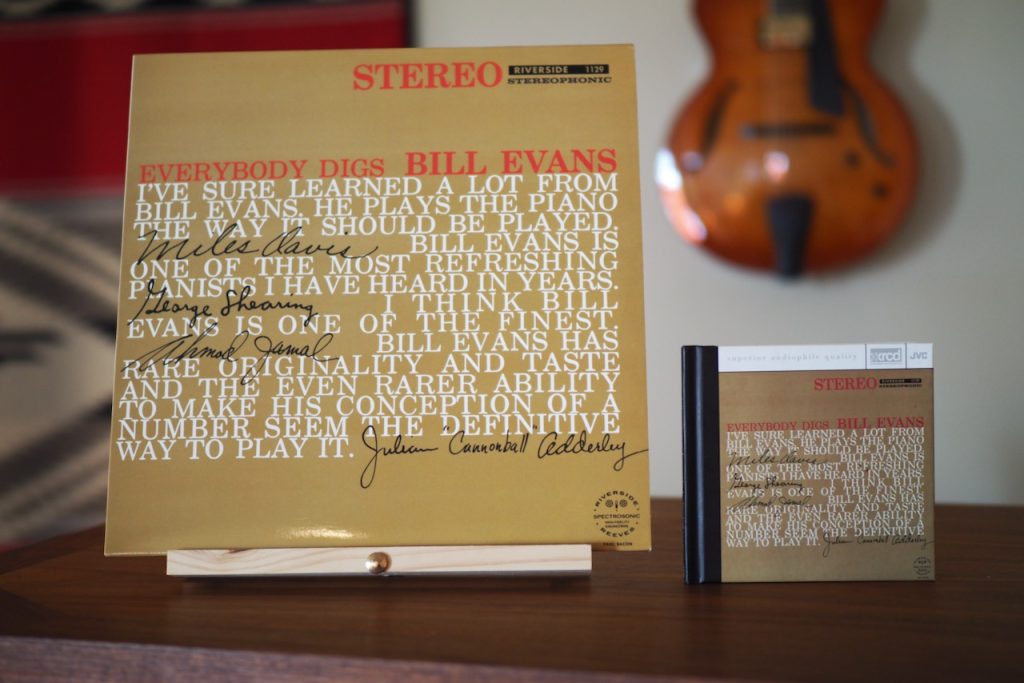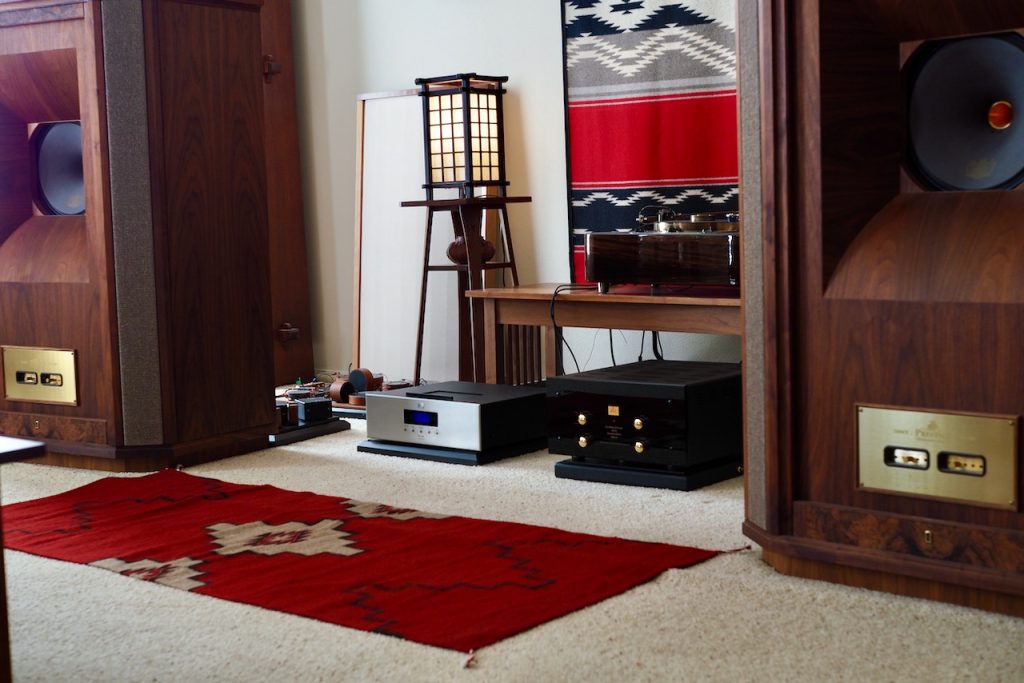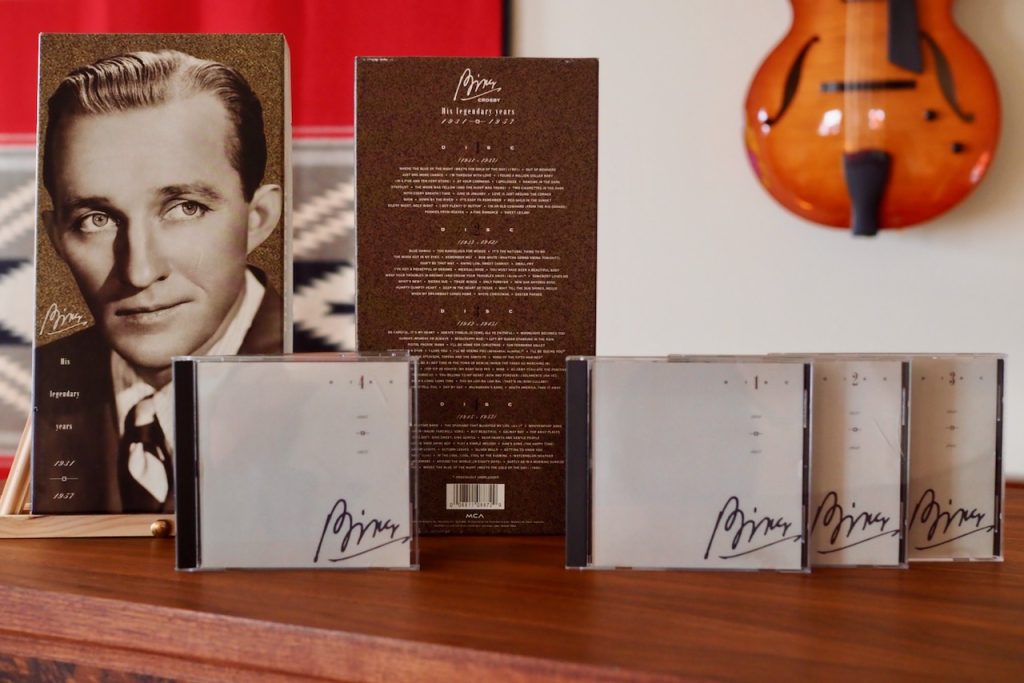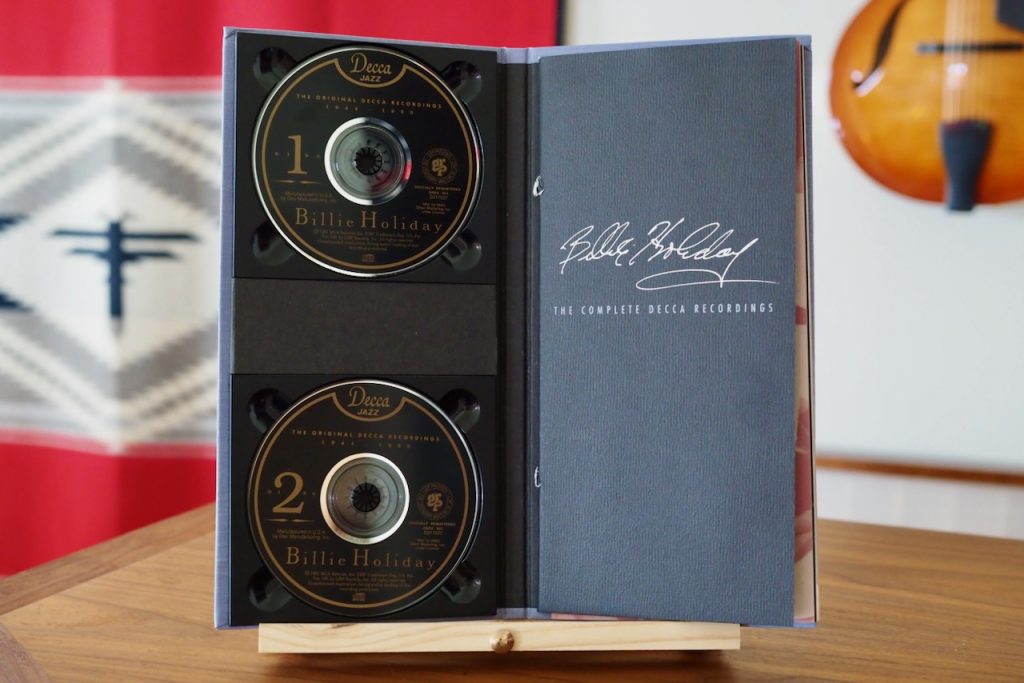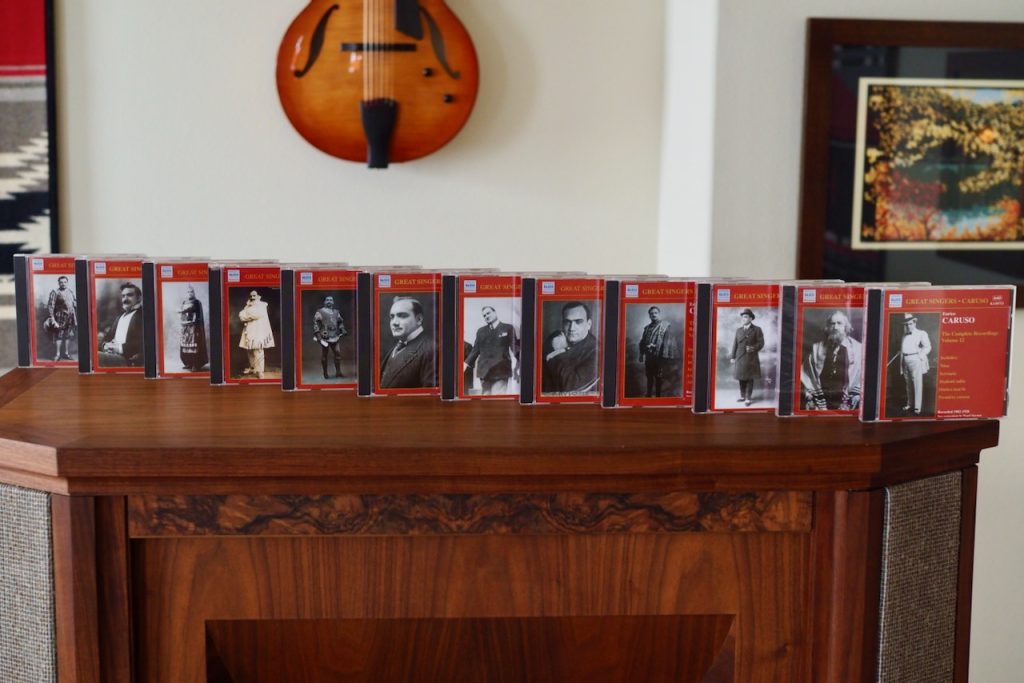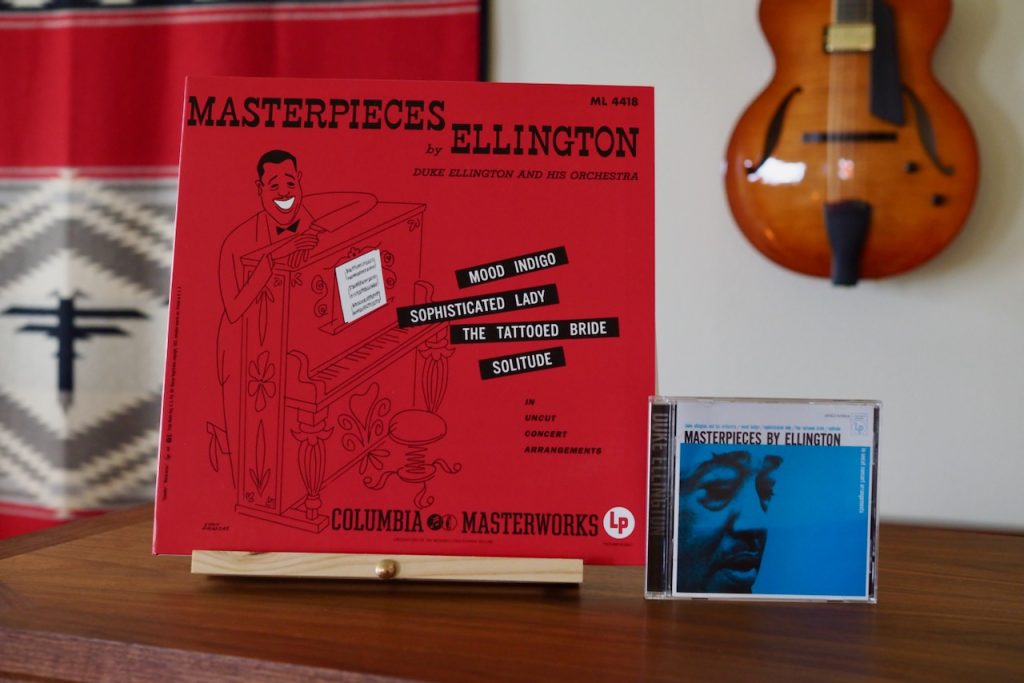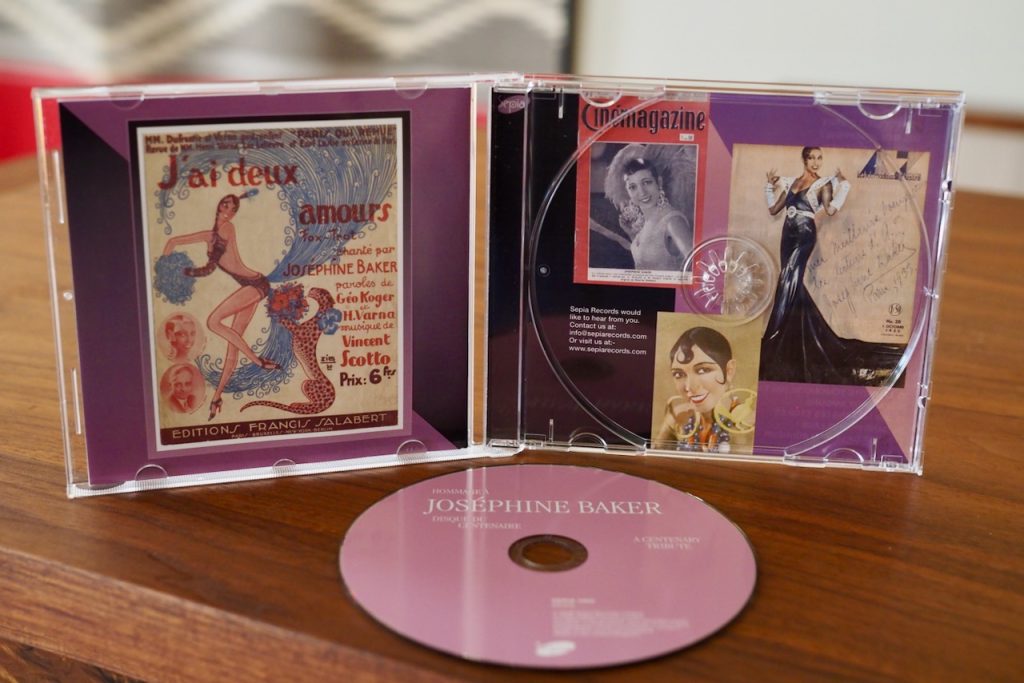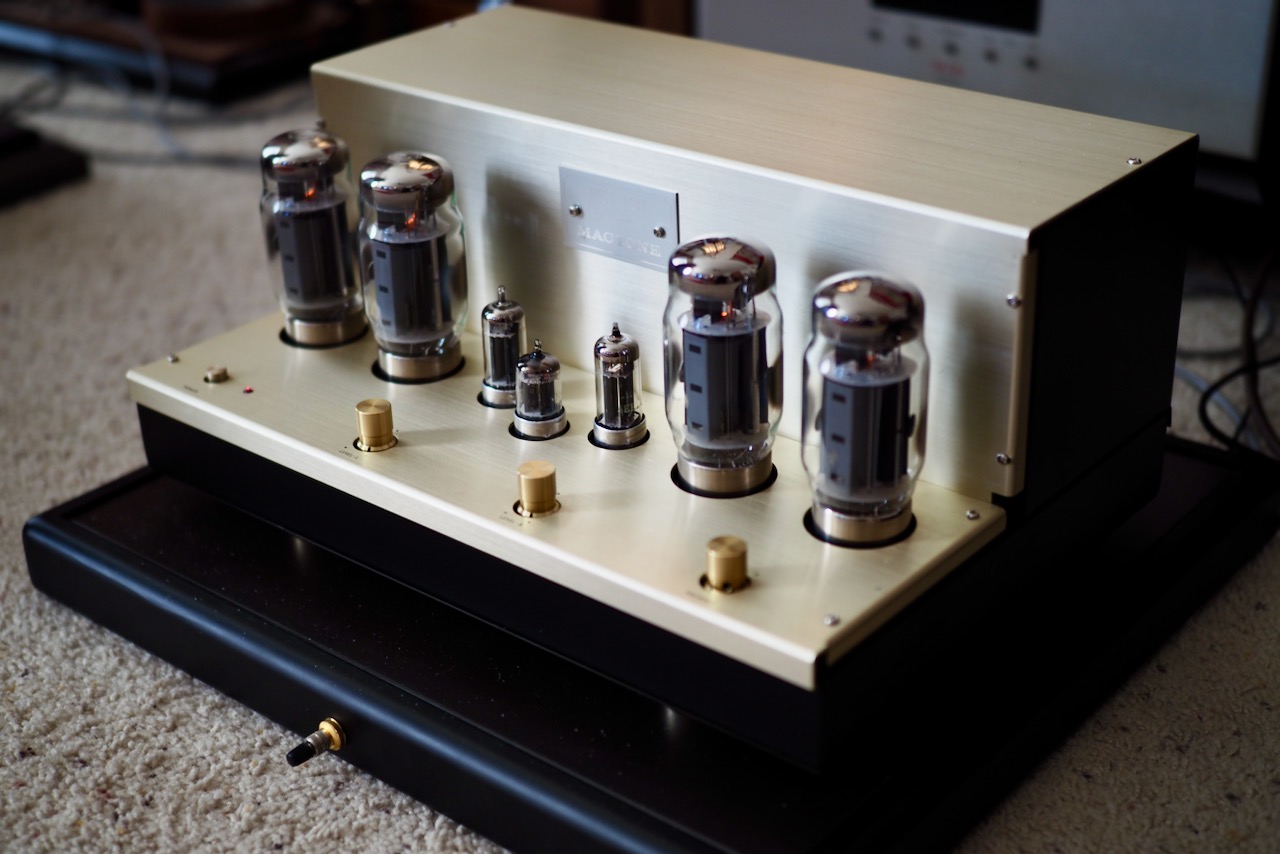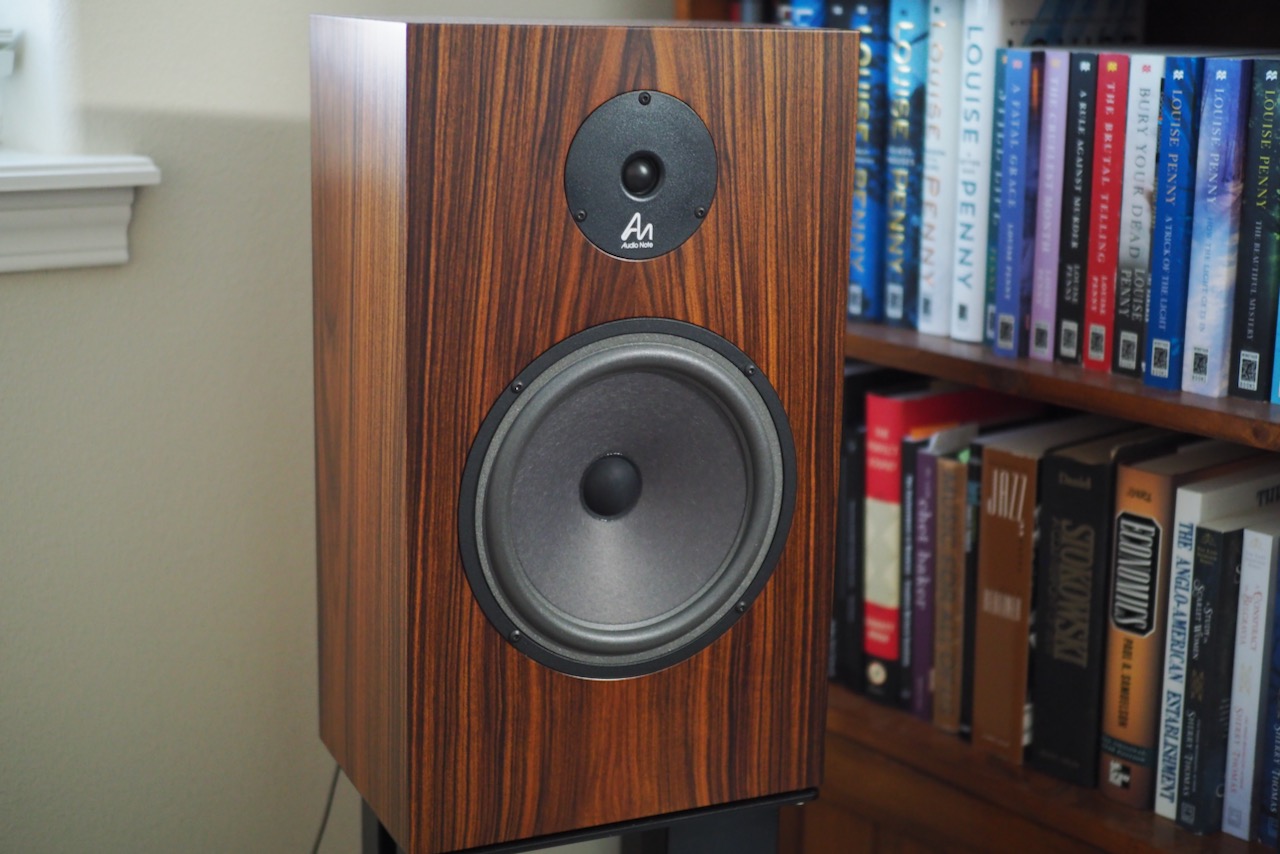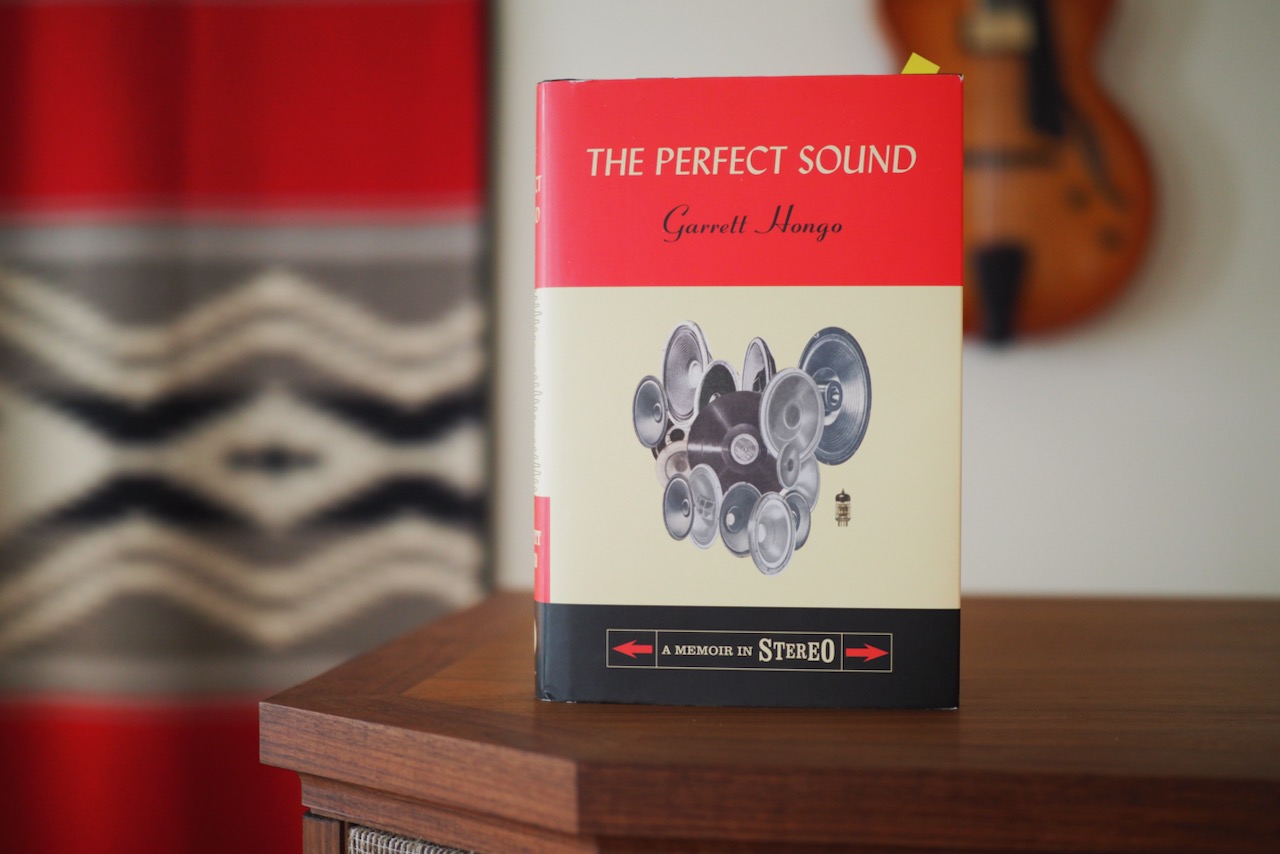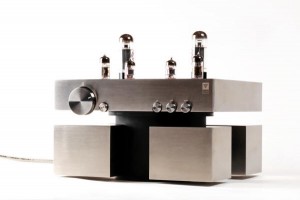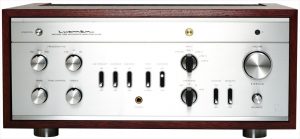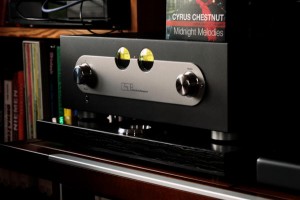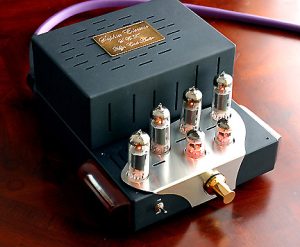Now lets move onto the Meishu's performance in my Westminster Royal SE loudspeakers based music system (above), and listen to its performance with Audio Note (UK) Level Three line-level and phono sources.
For a vinyl source, I used the afore-mentioned Level Three Audio Note (UK) Io I MC phono cartridge, Level Four AN-S4 step-up transformer, and Level Three AN-V silver interconnects (review HERE), in combination with my custom CTC Garrard 301 turntable.
For a digital source I used the Level Three Audio Note (UK) CD 4.1x Red Book CD player (review HERE).
As I mentioned in my Positive Feedback reviews of those sources, they both significantly exceeded the performance of the other analog and digital sources that I have had at my disposal, and in combination with the Meishu, they provided a full Level Three Audio Note (UK) source to amplification listening experience.
Let me start with my listening impressions of the Audio Note (UK) CD 4.1x Red Book CD player and Meishu combination.
As you might expect, the 'Level Three' CD 4.1x CD player is a very synergistic match to the 'Level Three' Meishu (above).
I think a lot of you would be very impressed by the sound quality and musicality of this Level Three pairing, just as I was.
The 2.1x/II and 4.1x CD players have opened up a new world of musical enjoyment for me, and have really allowed me to explore the many great musical treasures available to today's listeners on Compact Disc.
For example, I've really enjoyed listening to the great monaural recordings of musical performances from the acoustic (1877 - 1925), electric (1925 - 1945), and early magnetic (1945 - 1957) eras of the recording arts.
Many of these early monaural recordings have been meticulously transferred to digital, and made available on compact disc.
Listening to these early recordings has expanded my aural palette of listening skills, increased my appreciation of recording techniques used over the different eras of the recording arts, and taken me deeper into the enjoyment and appreciation of the music contained within our vast historic recorded music canon.
I recommend listening to those early monaural recordings as a way to broaden your listening horizons, and to improve your listening skills.
The highest-fidelity recordings from the stereo period of the magnetic era (1957 - 1975), and the digital era (1975 - today), were remarkable in their sound quality and musicality through the Audio Note (UK) CD 4.1x Red Book CD player and Meishu integrated amplifier combination.
The sound quality and musicality of the best of those magnetic era CDs approached that of top-shelf vinyl, although to my ears, vinyl still bests CD sound quality and musicality, although the performance gap has narrowed considerably with a CD player as formidable as the Audio Note (UK) CD 4.1x.
The Audio Note (UK) CD 4.1x offers such a high level of sound quality and musicality, that I suspect it would outperform most turntables up to about the $20K USD threshold.
As you might expect, the Meishu delivers the same sort of high-fidelity performance benefits from CDs that I heard from the audio-visual sources in my audio-visual system: high-resolution and transparency, articulate and resolved dynamic response, deep and articulate bass response, smooth and sweet extended high-frequency treble response, a rich presentation of harmonics, gorgeous tonal balance, an expansive room filling sense of ambient acoustic space, and a naturally "real-sound" quality that was full of life and emotion.
For high-quality stereo recordings, add to that list of attributes an impressive display of visuospatial imaging and soundstage performance.
The Tannoy Westminster Royale SE loudspeakers in my music listening system are positioned in a more traditional audiophile arrangement (above), with the loudspeakers well out into the room from the front wall, with plenty of space from the sidewalls, which accentuates imaging and soundstage attributes of stereo era recordings.
The front of my West's are 77 inches out from the front wall, sides are 48 inches from the side walls, and the loudspeakers are 112 inches apart, center-to-center. My listening position is about 12 feet from the Westminsters, and the rear wall is about 12 feet behind my listening 'couch.'
The Meishu's imaging and soundstage prowess that expanded the sound-field dimensions and imaging capabilities of my room boundary positioned Altec A5 Voice of the Theatre loudspeakers, were also in full evidence with my Tannoy Westminster Royal SE loudspeakers with their audiophile-style positioning.
The Meishu demonstrated that it was capable of giving the listener the best of both worlds, allowing for a space saving room boundary positioning of loudspeakers, as with my Altec A5 Voice of the Theatre loudspeakers, while still providing a level of imaging and soundstaging ability of a much larger room, where loudspeakers are positioned in an imaging and soundstage enhancing audiophile placement, as with my Tannoy Westminster Royal SE loudspeakers.
I've been really impressed with how well the Meishu delivers the musical artistry, life, and emotional wallop from performances by Enrico Caruso, John McCormack, Louis Armstrong, Joséphine Baker, Bing Crosby, Billie Holiday, Duke Ellington, and many others, as documented in early monaural recordings.
While early monaural recordings are more limited in their bandwidth than later stereo recordings, the Meishu's superb musicality, natural tonal balance, sweet high-frequencies, vivid SET midrange, high resolving power, and dynamic sophistication from micro to macro, made those performances come alive for me in a dramatic and very enjoyable fashion.
I can tell you for sure that if you haven't had an opportunity yet to explore the many musical gems from the early monaural recording eras, you are in for a real treat when you begin to include them in your musical adventures.
For example, I found to my surprise, through the Meishu that many of the transfers of 78rpm direct-to-disc recordings that I've listened to had a sense of vividness, of 'living presence,' macro-dynamics, and emotional intensity to the musical performances, that few magnetic era stereo recordings could match.
Some of the early magnetic era monaural recordings—those before 1958—are very impressive as well, like those in the box set Bing, His Legendary Years, 1931 - 1957, and Masterworks By Ellington, for example.
The Meishu revealed those direct-to-disc recordings from the latter part of the electric era actually possess a level of emotional impact that can equal or exceed many of the early monaural magnetic era recordings, and also revealed that as we get into the magnetic era, you can hear the recordings' bandwidth increase, and the noise levels decrease.
The Meishu made listening to those early monaural recordings extremely fascinating and enjoyable, as it clearly resolved all the different recording techniques from those early recording eras, and yet always presented the musical performances from those eras with all of their musical artistry and emotional impact intact, and in a very immersive fashion.
I think that pretty well covers my line-level listening impressions of the Meishu with the CD 4.1x CD player as a digital source.




